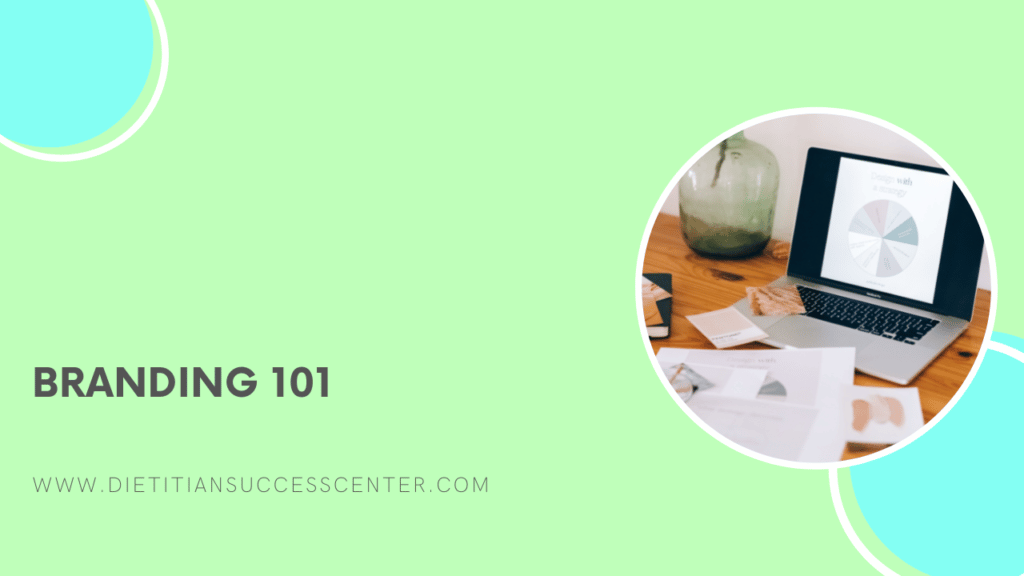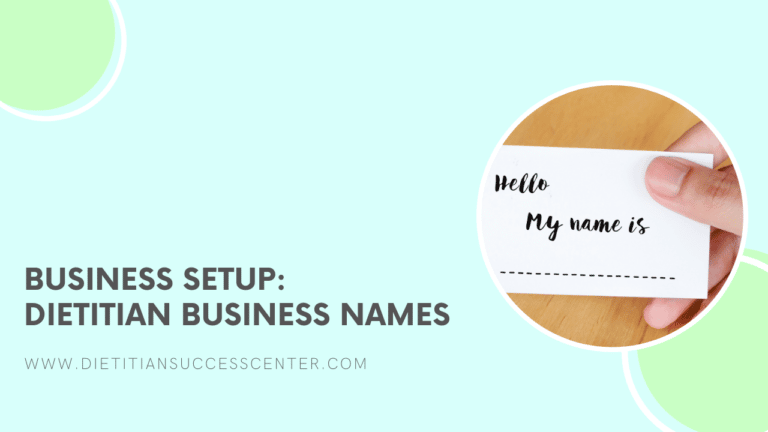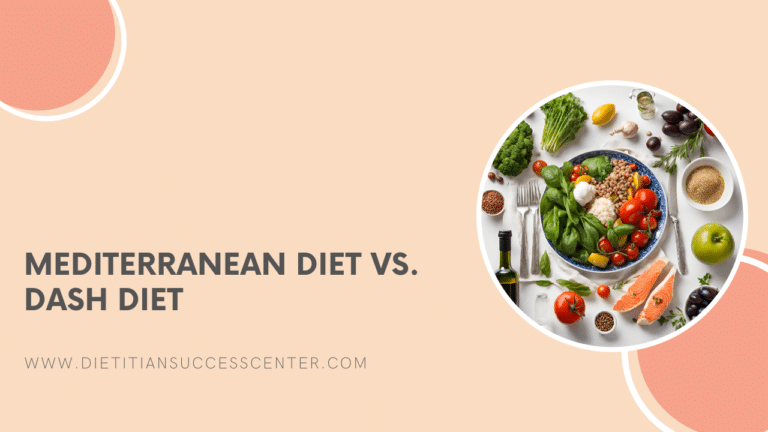Hey, Krista here!
I am a Registered Dietitian, business and online course creation coach, and the founder and CEO of Online Course Blueprint and Dietitian Success Center.
In this post, I’m going to cover branding for your business. I’ll talk about the importance of dietitian nutritionist branding and share five essential tips for you to consider when you are building your online brand for your business. Regardless of whether you are a Registered Dietitian, nutritionist, health coach or healthcare professional, this blog post is for you!

If you are a health & wellness entrepreneur who wants to make more money without seeing clients 1:1, check out my FREE online course creation course on how to choose your profitable online course topic. You will walk away with your course topic nailed down so you can start building your passive income empire.
Why should I think about my dietitian nutritionist branding?
Branding consists of visual elements that you use to represent you and your business. Branding impacts how you represent yourself online and how people perceive you and the work that you do, and it plays a big role in overall professionalism. If people are paying money for what you’re offering, they want to feel like they can trust you, and trust = professionalism.
Your brand can include things like:
-
- Your logo
-
- The colors that you use on your website and social media
-
- The language that you use on your website or social media (i.e. how you talk to your potential clients or potential customers)
-
- How you talk online – whether you’re recording a YouTube video, podcast episode, filming an Instagram story, etc.
One of the main reasons why I love having a strong, cohesive nutritionist branding is because it streamlines your creative process. Once you have your logo, brand colors and fonts, plus you’ve given some thought to how you show up and talk to your audience, it becomes so much easier to create content to post on social media & your website. Everything just starts to fall into place!
5 Essential Tips to Consider When Building Your Online Dietitian Nutritionist Brand
Tip #1 – Your ideal client should be at the center of your brand
Whether you’re a dietitian, nutritionist or health coach, the goal is to always remain ‘client centered’ when it comes to the work that you do. Consequently, we have to ask ourselves the question – who are we trying to attract with our brand, and who are we trying to repel?
Your brand actually helps you attract the right type of people for your services and repel the wrong type of person. Now, I know a lot of you might question the word “repel” here. We want everyone to be attracted to our business and what we have to offer, right?
Nope! That’s why we have an ideal client.
We have an ideal client because we are designing services, products or offers specifically to solve that person’s problem. We actually don’t want to attract everyone to our offer, we only want to attract the right people (ie. the people who our offer was designed for). Learn more about defining your niche here.
I always suggest to DSC Nutrition + Business Members, that they start by defining what we call a “brand essence”, which is essentially where we pick a few descriptive words that describe how we want our brand to be perceived by the world.
Tip #2 – Pick your brand elements and move on
When choosing things like your brand colors or brand fonts, I challenge you to pick something and move on.
Don’t get hung up in a state of ‘analysis paralysis’. ‘Analysis paralysis’ occurs when we spend way too much time spinning our wheels in the “making a decision” phase. It’s really common at this point in the process – we know the decision we’re about to make is important and so we’re hesitant to commit to something. But, we have to commit to something. You can change it later. You’re not stuck with your branding forever..
Tip #3 – Don’t refresh your brand too often
So if you’ve already chosen your colors, your fonts, and you’ve designed your website, don’t assume that a change in your brand will be the magic bullet that will suddenly make everything work in your business. It just won’t.
You’re not going to see more growth on Instagram just because you’ve changed your color scheme. What’s going to result in more growth is staying consistent, continuing to show up to talk about your offer.
Tip #4 – Don’t be afraid to look for branding inspiration
The idea here is NOT that we copy other people – at the end of the day the goal is to stand out (not to look like everyone else). However, you can absolutely gain inspiration from observing other people’s work and paying attention to the elements of their brand that you connect with. Check out other dietitian nutritionist branding on Instagram or Pinterest and look at various color schemes, fonts and overall aesthetic that you are attracted to. Ask yourself, why do you like it? And figure out a way to adapt it and make it your own.
Tip #5 – Standing out is essential
Looking for nutritionist branding inspiration is great, but at the end of the day, we want to make sure that we are standing out. I’m sure we’ve all noticed on our Instagram feeds that there tend to be consistent color schemes or fonts that are really ‘in’ at that current moment in time. It can be really tempting to follow those trends because we like the look of it, or it makes us feel safer when we blend in. However, a good brand should achieve the opposite – we want to be recognized and stand out from the pack (even if it feels scary!).
In summary, the five essential tips when you are creating your dietitian nutritionist branding are:
- Your ideal client should be at the center of your brand.
- Pick your brand elements and move on. Don’t get hung up in a state of analysis paralysis.
- Don’t refresh too often, or else it’s pointless.
- Don’t be afraid to look for branding inspiration.
- Standing out is essential.










